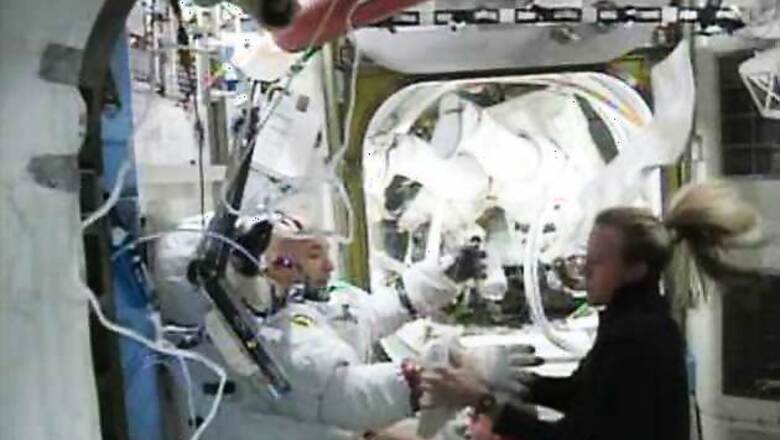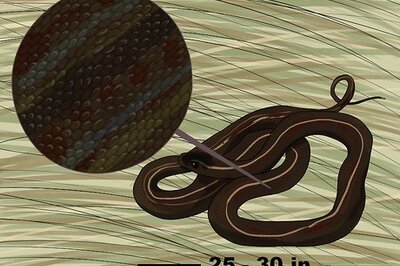
views
As his helmet filled with water, blurring his vision and cutting off radio communications, Italian astronaut Luca Parmitano says his thoughts quickly turned to the possibility of drowning during a recent spacewalk outside the International Space Station.
Parmitano gave a blow-by-blow account of the terrifying incident, which occurred on July 16, in a blog published this week.
"I can't even be sure that the next time I breathe I will fill my lungs with air and not liquid," Parmitano wrote on the European Space Agency's website.
"It's vital that I get inside as quickly as possible ... but how much time do I have? It's impossible to know," he wrote.
NASA, which oversaw the spacewalk, is investigating the cause of Parmitano's helmet malfunction. Pieces of the failed spacesuit are due to be returned to Earth for analysis aboard an upcoming SpaceX Dragon cargo ship or Russian Soyuz capsule, NASA spokesman Josh Byerly said.
Parmitano was setting up an internet cable between the space station's Unity connecting node and the Russian Zarya module when he noticed liquid collecting inside his helmet.
"The unexpected sensation of water at the back of my neck surprises me - and I'm in a place where I'd rather not be surprised," Parmitano wrote.
NASA says the water did not come from a drink bag in the space suit. Engineers are focusing on the suit's backpack, which holds a water storage tank for a liquid-cooled undergarment.
A week before the incident, Parmitano had become the first Italian astronaut to walk in space.
In a far more routine spacewalk on Thursday, two Russian cosmonauts floated outside the $100 billion research complex, which flies about 250 miles (400 km) above Earth, to do some maintenance work.
Flight engineers Fyodor Yurchikhin and Alexander Misurkin left the Russian Pirs airlock at 7:34 a.m. EDT (1134 GMT) for their second spacewalk in less than a week.
Their main goal was to remove a laser communications system from outside the Zvezda module, the crew's main living compartment, and install a swiveling platform for a future telescope.
Yurchikhin and Misurkin removed the laser system, which had been used since 2011 for high-speed data transmissions from Russian science experiments to ground stations. But they ran into a problem as they prepared to install a base for a pair of cameras that comprise the new telescope.
The cosmonauts realized that if the base was attached as planned, the camera's steerable platform would have been misaligned, said a translator monitoring communications between the spacewalkers and Russian flight controllers.
Flight controllers told the spacewalkers to skip that work and bring the equipment into the airlock. They moved on to their next task - inspecting covers on antennas used to dock Europe's unmanned cargo ships after one cover was seen floating away from the station on Monday.
Halfway through their work tightening screws to keep the remaining covers in place, Russian flight controllers changed their minds and told the cosmonauts to retrieve the telescope platform from the airlock and go ahead with the installation.
"They realized the camera platform would only be out of alignment in the yaw axis, not in the roll or pitch axes," NASA mission commentator Pat Ryan, referring to the three directions of motion, said during a TV broadcast of the spacewalk by the US space agency.
"They determined it would be possible to correct for that misalignment ... by using the pointing platform," he said.
Thursday's six-hour spacewalk came six days after a 7-1/2 hour outing by Yurchikhin and Misurkin, which set a Russian record. That spacewalk, as well as one that the cosmonauts made on June 24, were primarily to prepare the station for a new multipurpose Russian module that is scheduled for launch in December.




















Comments
0 comment